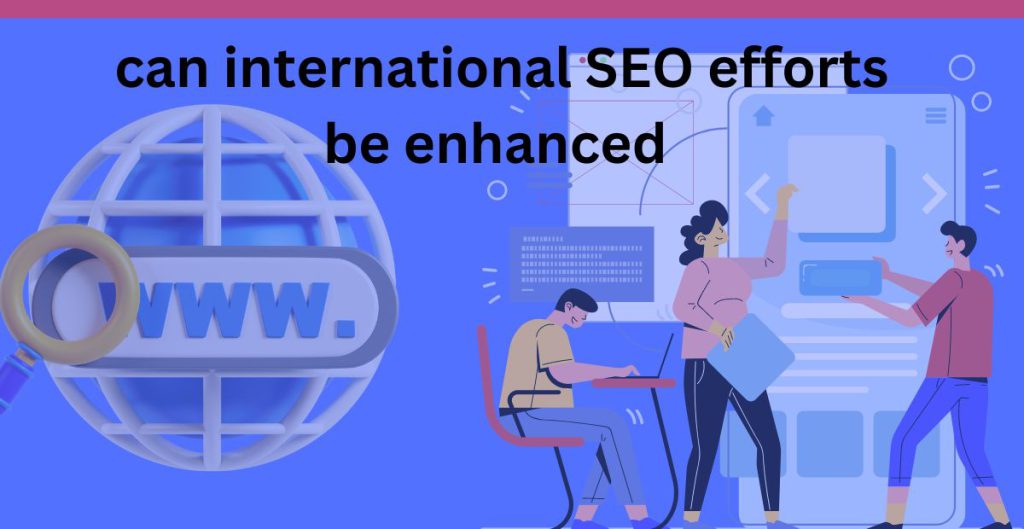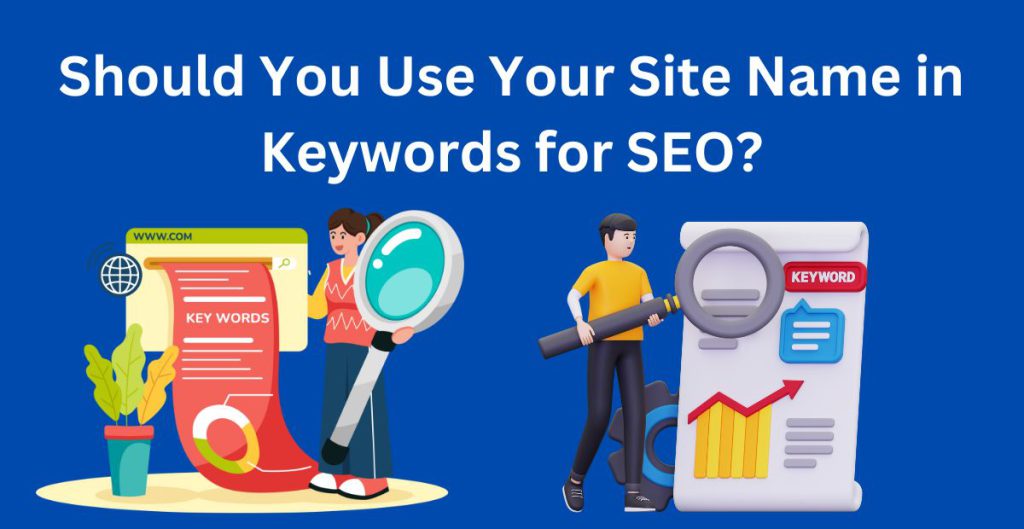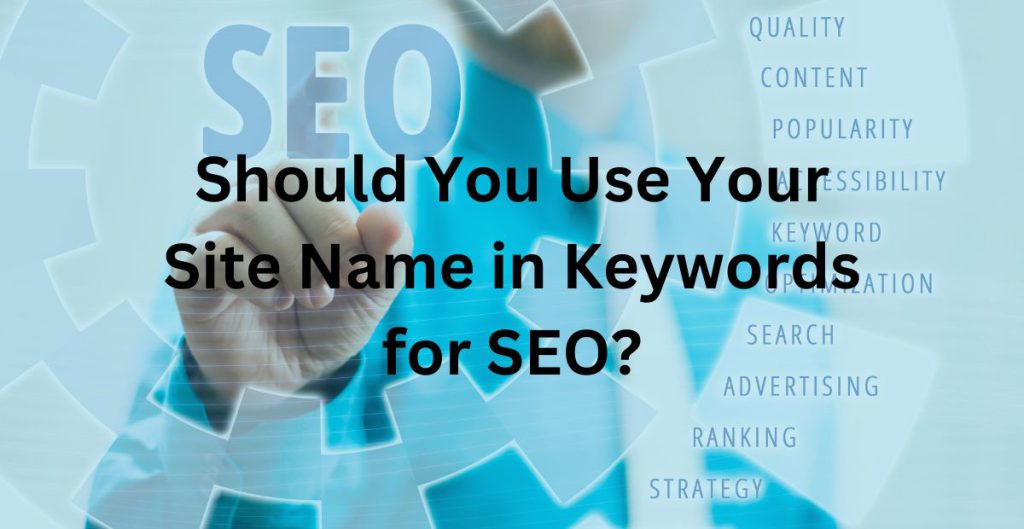
Top SEO strategies to enhance your Google ranking, written by Humayun Ahmed.Achieving a high Google ranking is crucial for driving traffic and increasing visibility. With Google’s algorithms constantly evolving, implementing top SEO strategies to improve Google ranking is essential for maintaining and enhancing your online presence. This guide explores the top SEO strategies to improve Google ranking, ensuring you stay ahead of the competition and achieve online success.
1. Top SEO Strategies to Improve Google Ranking with Comprehensive Keyword Research
Keyword research is the foundation of any top SEO strategy to improve Google ranking. It helps you understand the terms your target audience is searching for, allowing you to create content that aligns with their needs and interests. By incorporating effective keyword research into your SEO strategies, you can significantly improve your Google ranking and drive more targeted traffic to your website.
How to Conduct Keyword Research to Improve Google Ranking
Use Keyword Tools
- Google Keyword Planner: This free tool provides valuable insights into search volume, keyword competition, and related keyword suggestions. By entering seed keywords relevant to your business, you can generate a list of keywords and analyze their potential to drive traffic.
- Ahrefs: Ahrefs offers a powerful keyword explorer tool that provides data on search volume, keyword difficulty, and click-through rates. It also allows you to analyze competitor keywords and identify new opportunities for your own content.
- SEMrush: SEMrush is a comprehensive SEO tool that offers keyword research, competitive analysis, and site audit features. Its keyword research tool helps you find high-potential keywords and evaluate their performance against your competitors.
- Ubersuggest: Developed by Neil Patel, Ubersuggest provides keyword suggestions, search volume data, and SEO difficulty scores. It’s particularly useful for identifying long-tail keywords and generating content ideas.
Analyze Competitors
- Identify Top Competitors: Start by identifying your main competitors using tools like Ahrefs or SEMrush. Analyze their websites to discover the keywords they rank for and gain insights into their SEO strategy.
- Evaluate Competitor Content: Review the content that ranks well for your competitors and assess its quality. Look for gaps in their content that you can address or opportunities to create more comprehensive and engaging content.
- Benchmarking: Compare your site’s performance with competitors to identify areas for improvement. Use competitor insights to refine your keyword strategy and enhance your content.
Focus on Search Intent
- Types of Search Intent: Understanding search intent is crucial for creating content that meets user needs. Search intent can be categorized into informational (seeking answers), navigational (looking for a specific website), and transactional (intending to make a purchase).
- Aligning Content: Ensure your content aligns with the specific intent behind the keywords you are targeting. For example, if users are searching for “how to fix a leaking faucet,” your content should provide a step-by-step guide or video tutorial.
Utilize Long-Tail Keywords
- Benefits of Long-Tail Keywords: Long-tail keywords are more specific and often have lower competition, making them easier to rank for. They also tend to attract highly targeted traffic with a higher conversion potential.
- Finding Long-Tail Keywords: Use keyword research tools to identify long-tail keywords related to your industry. Incorporate these keywords into your content to capture niche search queries and improve your chances of ranking.
2. Optimize On-Page SEO for Better Google Ranking
On-page SEO involves optimizing individual pages on your website to rank higher and earn more relevant traffic. This includes elements like content, title tags, meta descriptions, URLs, and internal links.
Key On-Page SEO Elements to Improve Google Ranking
Title Tags and Meta Descriptions
- Title Tags: Your title tag is one of the most important on-page SEO elements. It should be compelling, concise, and include your primary keyword. Aim for a length of 50-60 characters to ensure it displays fully in search results.
- Meta Descriptions: Meta descriptions provide a brief summary of your page content and can influence click-through rates. Write engaging and informative meta descriptions that include relevant keywords and encourage users to click through to your site. Keep the length between 150-160 characters.
Headings (H1, H2, H3, etc.)
- H1 Tags: The H1 tag should include your primary keyword and provide a clear indication of the page’s main topic. There should be only one H1 tag per page to maintain a clear content hierarchy.
- Subheadings (H2, H3, etc.): Use subheadings to organize your content into easily digestible sections. Incorporate relevant keywords into H2 and H3 tags to improve content readability and SEO.
URL Structure
- Descriptive URLs: Create clean, descriptive URLs that reflect the content of the page. Avoid using long, complicated URLs and instead use concise, keyword-rich URLs. For example, use “example.com/seo-strategies” instead of “example.com/page1”.
- URL Slugs: Ensure URL slugs are short and include relevant keywords. This helps both users and search engines understand the page content and improves overall SEO.
Alt Text for Images
- Descriptive Alt Text: Alt text helps search engines understand the content of your images. Include descriptive, keyword-rich alt text for each image to improve SEO and make your site more accessible.
- Optimize Image Size: Compress images to reduce file size without sacrificing quality. This helps improve page load times and overall user experience.
Internal Linking
- Link to Relevant Pages: Use internal links to guide users to other relevant pages on your site. This helps improve navigation, increase time on site, and distribute page authority across your site.
- Anchor Text: Use descriptive anchor text for internal links to provide context and relevance. Avoid generic text like “click here” and instead use keywords related to the linked page.
3. Create High-Quality, Engaging Content to Boost Google Ranking
Content is the backbone of any SEO strategy. High-quality, engaging content attracts visitors, encourages sharing, and earns backlinks, all of which contribute to improved Google rankings.
Tips for Creating SEO-Friendly Content to Improve Google Ranking
Focus on User Intent
- Understand User Queries: Create content that answers the questions and solves the problems your audience is searching for. Use keyword research to identify common queries and incorporate them into your content.
- Content Formats: Consider various content formats, such as blog posts, how-to guides, videos, and infographics, to address different types of user intent and engagement preferences.
Produce Long-Form Content
- Benefits of Long-Form Content: Long-form content tends to perform better in search rankings due to its depth and comprehensiveness. Aim for content that is at least 1,500 to 2,500 words to provide valuable information and cover topics thoroughly.
- Content Quality: Ensure your long-form content is well-researched, informative, and engaging. Avoid fluff and focus on delivering value to your readers.
Use Multimedia
- Incorporate Visuals: Enhance your content with images, infographics, and videos to make it more engaging and shareable. Multimedia elements can help illustrate complex concepts and keep users on your page longer.
- Optimize Multimedia: Ensure that all multimedia elements are optimized for fast loading and include relevant alt text. This improves user experience and contributes to better SEO.
Update Content Regularly
- Content Refresh: Regularly update old content with new information and insights. This helps keep your site relevant and accurate, and signals to search engines that your content is current.
- Content Audit: Perform periodic content audits to identify outdated or underperforming content. Update or repurpose this content to improve its performance and relevance.
Use LSI Keywords
- Latent Semantic Indexing (LSI): LSI keywords are related terms that help search engines understand the context of your content. Include LSI keywords to cover a broader range of search queries and improve content relevance.
- Keyword Integration: Incorporate LSI keywords naturally into your content, headings, and meta tags to enhance your content’s context and improve search visibility.
4. Optimize for Mobile to Improve Google Ranking
Mobile optimization is crucial for SEO success, as mobile devices account for a significant portion of web traffic. Ensuring that your site performs well on mobile devices is essential for maintaining high rankings.
How to Optimize Your Website for Mobile and Boost Google Ranking
Responsive Design
- Adopt a Responsive Layout: Implement a responsive design that adjusts your website’s layout to fit different screen sizes. This ensures a consistent user experience across desktops, tablets, and smartphones.
- Test Mobile Usability: Use tools like Google’s Mobile-Friendly Test to check how your site performs on mobile devices. Address any issues related to layout, readability, or functionality.
Mobile Page Speed
- Optimize Load Times: Mobile users expect fast-loading pages. Optimize images, use browser caching, and minimize HTTP requests to improve mobile page speed.
- Google’s PageSpeed Insights: Utilize Google’s PageSpeed Insights tool to identify and address factors affecting your mobile page load times. Implement recommended improvements to enhance performance.
Simplified Navigation
- Mobile-Friendly Menus: Design mobile menus that are easy to navigate with touchscreens. Use large buttons, clear labels, and simple navigation structures to improve usability.
- Avoid Flash: Avoid using Flash or other outdated technologies that may not be supported on mobile devices. Stick to HTML5 and other modern technologies for better compatibility.
Use Accelerated Mobile Pages (AMP)
- Implement AMP: Accelerated Mobile Pages (AMP) is a framework designed to create faster-loading versions of your web pages for mobile users. Implement AMP to improve mobile page speed and potentially boost your rankings in mobile search results.
- AMP Benefits: AMP pages load quickly and offer a streamlined user experience, which can lead to higher engagement and lower bounce rates.
5. Improve Website Speed and Performance to Boost Google Ranking
Website speed is a critical factor in top SEO strategies to improve Google ranking and user experience. A slow-loading site can negatively impact your Google rankings and drive users away. Improving website speed should be a priority in your SEO strategy, and you can refer to resources like Google’s PageSpeed Insights to monitor and enhance your site’s performance. Implementing these SEO strategies will help ensure your website ranks higher and provides a better user experience.
Top Strategies to Improve Website Speed for Better Google Ranking
Optimize Images
- Compress Images: Use image compression tools to reduce file sizes without sacrificing quality. Smaller images load faster and contribute to better overall page speed.
- Use Proper File Formats: Choose the appropriate file format for each image. For example, use JPEG for photographs and PNG for graphics with transparency.
Leverage Browser Caching
- Enable Caching: Browser caching allows frequently accessed resources to be stored locally on users’ devices, reducing load times for subsequent visits. Configure caching settings in your web server or use a caching plugin for CMS platforms.
- Set Expiration Dates: Specify expiration dates for cached resources to ensure that users receive updated content when changes are made.
Minimize HTTP Requests
- Reduce Requests: Minimize the number of HTTP requests by combining CSS and JavaScript files, using CSS sprites for images, and avoiding unnecessary plugins.
- Optimize Code: Clean up and streamline your code by removing unused CSS and JavaScript. Use minification techniques to reduce file sizes.
Use Content Delivery Networks (CDNs)
- Implement a CDN: A Content Delivery Network (CDN) distributes your site’s content across multiple servers worldwide. This helps deliver content faster to users based on their geographic location.
- CDN Benefits: CDNs improve load times, reduce server load, and enhance website performance. Popular CDN providers include Cloudflare, Akamai, and Amazon CloudFront.
6. Build High-Quality Backlinks to Improve Google Ranking
Backlinks are a critical factor in SEO, as they signal to search engines that your content is valuable and authoritative. Building high-quality backlinks can significantly improve your Google ranking.
Effective Strategies for Building Backlinks to Boost Google Ranking
Create Valuable Content
- Content Marketing: Develop high-quality, valuable content that naturally attracts backlinks. Content types such as infographics, research reports, and comprehensive guides are often linked to by other websites.
- Guest Blogging: Write guest posts for reputable websites in your industry. Include relevant links back to your site within the content or author bio to build backlinks.
Monitor Backlinks
- Track Backlinks: Use tools like Ahrefs or SEMrush to monitor your backlink profile. Regularly check for new backlinks and ensure that they come from reputable sources.
- Disavow Low-Quality Links: Identify and disavow any low-quality or spammy backlinks that could negatively impact your SEO. Google’s Disavow Tool can help you manage harmful links.
Build Relationships
- Networking: Build relationships with industry peers, influencers, and bloggers. Networking can lead to natural backlink opportunities and collaborations.
- Participate in Forums: Engage in industry forums and communities to build connections and earn backlinks from relevant discussions and contributions.
Analyze Competitors’ Backlinks
- Backlink Analysis: Use tools like Ahrefs or SEMrush to analyze your competitors’ backlink profiles. Identify high-quality backlinks and explore opportunities to acquire similar links.
- Replicate Strategies: Implement strategies that your competitors use to build backlinks. This could include outreach campaigns, content partnerships, or resource link building.
7. Leverage Local SEO to Improve Google Ranking
For businesses targeting local customers, local SEO is a key component of top SEO strategies to improve Google ranking. Optimizing for local search improves visibility in geographically relevant search results, helping attract nearby customers. By incorporating local SEO into your SEO strategies, you can enhance your presence in local searches and improve your Google ranking.
Best Local SEO Strategies to Enhance Google Ranking
Claim and Optimize Google My Business (GMB)
- Google My Business: Claim your GMB listing and ensure that your business information is accurate and complete. Add photos, business hours, and a description of your services to enhance your listing.
- Customer Reviews: Encourage customers to leave reviews on your GMB listing. Respond to reviews to show engagement and build credibility with potential customers.
Optimize for Local Keywords
- Local Keyword Integration: Include local keywords in your website content, meta tags, and URLs. For example, use phrases like “dentist in New York” if you’re targeting a local audience in New York.
- Localized Content: Create content that highlights local events, news, or topics relevant to your community. This helps attract local traffic and improve your local search rankings.
Build Local Citations
- Consistent NAP: Ensure that your business name, address, and phone number (NAP) are consistent across all local directories and websites. Inconsistent NAP information can negatively impact your local SEO.
- Local Directory Listings: Submit your business to local directories such as Yelp, Yellow Pages, and local business associations. These citations help improve your local search visibility.
Create Local Content
- Community Engagement: Produce content that showcases your involvement in the local community. This could include highlighting local events, supporting local causes, or featuring local customer success stories.
- Localized Blog Posts: Write blog posts about local topics, trends, or news. This type of content helps connect with local audiences and improves your relevance in local searches.
8. Monitor and Analyze SEO Performance to Improve Google Ranking
Ongoing monitoring and analysis are essential for maintaining and improving your SEO performance. Regularly reviewing your SEO metrics helps you identify what’s working and where adjustments are needed. For a comprehensive approach to SEO analysis, explore our Guide to SEO Metrics and SEO Performance Tracking resources. These internal resources provide valuable insights and actionable strategies to refine your top SEO strategies to improve Google ranking.
Essential Tools for Monitoring SEO Performance and Boosting Google Ranking
Google Analytics
- Track Website Traffic: Use Google Analytics to monitor key performance indicators (KPIs) such as organic search traffic, bounce rate, and average session duration. Analyze user behavior and engagement to identify areas for improvement.
- Conversion Tracking: Set up conversion tracking to measure the effectiveness of your SEO efforts. Track goals such as form submissions, downloads, or purchases to assess your site’s performance.
Google Search Console
- Search Performance: Google Search Console provides insights into how your site appears in search results. Review search queries, click-through rates (CTR), and indexing status to monitor performance.
- Fix Issues: Use Search Console to identify and fix issues such as crawl errors, security problems, and mobile usability issues. Addressing these issues helps maintain optimal site performance.
SEO Auditing Tools
- Ahrefs: Ahrefs offers in-depth SEO audits that analyze various aspects of your website’s SEO. It identifies issues such as broken links, duplicate content, and technical SEO problems.
- SEMrush: SEMrush provides comprehensive site audits that assess on-page SEO, technical issues, and overall site health. Use the audit results to make necessary improvements.
Track Keyword Rankings
- Keyword Tracking: Regularly monitor your keyword rankings to assess the impact of your SEO efforts. Track changes in rankings to understand how well your site performs for target keywords.
- Adjust Strategies: Use keyword ranking data to adjust your SEO strategies. Focus on improving rankings for underperforming keywords and explore new opportunities for growth.
Conclusion
Improving your Google ranking requires a multifaceted approach that includes keyword research, on-page optimization, high-quality content creation, mobile optimization, speed enhancements, backlink building, local SEO, and ongoing performance monitoring. By implementing these top SEO strategies, you can enhance your website’s visibility, attract more targeted traffic, and achieve better search engine rankings.
SEO is an ongoing process, and staying updated with the latest trends and algorithm changes is crucial for maintaining your competitive edge. Continuously refine your strategy based on data and performance insights to achieve long-term success in the ever-evolving world of SEO.
Implement these strategies with diligence and patience, and you’ll











